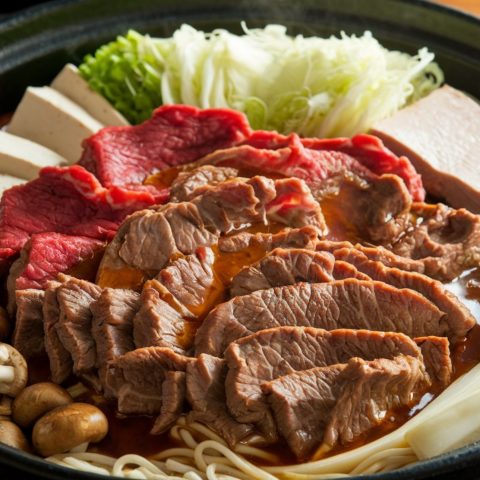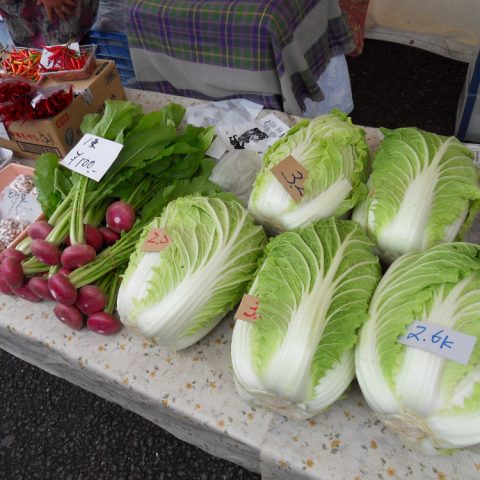
Okayu, a Japanese dish, simple yet profound, holds the secret to both comfort and joy. It is well known that Japan has many different delicacies, and Okayu is one of them. Like most Japanese meals, it is rooted in culture and has multiple variations. This article will teach you about the basics of Okayu and its rich history.
What is Okayu All About?
What actually is this supposed healing food? Okayu is a Japanese porridge that traditionally consists of rice, water, and some toppings. It is often used as a remedy to soothe a weak stomach. Compared to other similar dishes, Okayu is often much thicker due to its water-to-rice ratio. It is a simple dish, though it can be very versatile. This is because you are able to switch water for stock, make it thick or thin, and add any topping you like!

Okayu with pickled plum – Photo Credit: Live Japan
Healing Properties
Okayu is considered a healing food in Japan. Its abilities are to soothe and restore energy. The energy restoration is said to come from it being warm. Thus boosting the body’s internal energy and helping you get better. Its healing powers come from the rice being soft and easily digestible. It gets its softness from the cooking process, where the rice gets broken down while being prepared. Because it is tender and easy on the stomach, it is also commonly consumed by the elderly and babies.

“Ume gayu,” Japanese pickled plum on rice porridge – Photo Credit: millionreason
Traditions and Origin
Okayu is not only a delicious and soothing dish, but it also has many traditions tied to it. For example, the practice of eating Okayu when being ill actually comes from the Kanto region. While in Kansai, it is usually eaten for breakfast. Those are the traditions tied to it in terms of when it is eaten. However, there are also many festivities where the meal has an important role.
Okayu has a spin-off to suit almost every one of these occasions and customs. An example of a variation is Nanakusa-gayu, meaning seven-herb rice porridge. This type features five spices and traditional herbs combined with radish and turnip. Nanakusa-gayu is often eaten in Kyoto on the Japanese New Year. Another alternative, named Azukigayu, is served at the Okayu festival in Sakyo-ku. This specific version consists of rice porridge with red beans or soybeans. At this festival, it is offered to the god while praying for a bountiful harvest and national peace.

Red bean Okayu – Photo Credit: Live Japan
With numerous traditions around Okayu coming from Kyoto, you would think the dish originates from there as well. However, it does not; It is originally from China, where they call it Congee. Nevertheless, it has been consumed in Japan for approximately 1,000 years. It was not until the Edo period that it got its signature texture we adore today.

Okayu in clay pot – credit: Green House Foods
THE Way to Eat Okayu
As mentioned before, Okayu is very customizable. However, knowing what is commonly used to make it can help preserve the traditional flavor.
In its basic form, it consists of 1 part rice to 5 parts liquid. However, when using pre-cooked rice, the ratio is 1 part rice to 2 parts liquid. You already know the liquid used can be either water or whatever stock you prefer. However, using stock adds more flavor to the dish, allowing for a bit more seasoning. Therefore, meat or seafood stock is often used in restaurants, so vegans should be vigilant when going to eat it there.
Now that you know how to make the base, what about the add-ons? Toppings commonly used are:
- Chopped green onion/scallion
- Umeboshi (Japanese pickled plums)
- Toasted white sesame seeds
- Shredded nori seaweed
- Japanese salted salmon
- Mitsuba (Japanese parsley)
These follow tradition, but you can always use any garnish you think is tasty.

Toppings for Okayu – Photo Credit: Live Japan
Cooking is also done in a specific way; the rice porridge is traditionally prepared in a clay pot. That is called Donabe, meaning clay pot in Japanese. They are often used to prepare hot pot dishes. The reason for using a Donabe is because the lid keeps everything inside hot and cooks the food evenly. Once you are done with the assembly, you can dig in with a Renge, a big ceramic spoon.

Rice in a Donabe – Photo Credit: Japan Design Store
What did we end up learning about this magical Japanese food? Well, it is a simple Japanese meal that is very customizable. It is soft and easy on the stomach, which can help you get better when recovering from sickness. The dish is not only good for people with a weaker stomach but also has beautiful traditions tied to it. Nearly every one of these traditions has its own iconic version of Okayu. It is also quite easy to prepare, but to stay true to tradition there are a few rules you must follow. With your newfound knowledge, you are now able to enjoy its healing properties by making Okayu at home. That way, you can appreciate its soothing properties and traditional beauty.
Featured Photo Credit: aomas
Want to have more fun on your trip to Japan? Join a culinary tour and discover the country as a local!




